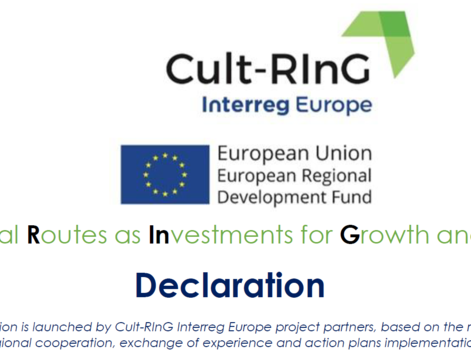
Cult-RInG Partnership Declaration on ECRs launched !
A Declaration is launched by the Cult-RInG project partnership on ECRs , based on the results of interregional cooperation and action plans implementation
Cultural Routes of the Council of Europe have been established since 1987, stressing the importance of European identities. The Enlarged Partial Agreement on Cultural Routes currently comprises 31 routes contributing to protection and development of natural and cultural heritage. Cultural Routes are used as powerful tools to promote and preserve EU’s shared and diverse cultural identities, as well as provide a better understanding of the history of Europe through inter-regional exchanges of people, ideas and cultures.
The impacts of Cultural Routes on SMEs’ innovation and competitiveness have showed that they are:
There is a common challenge, in terms of evaluating and exploiting the benefits of existing cultural routes and deploy them in the development of new routes, so that Growth & Jobs targets can be met faster.
The overall objective of the Cult-Ring project is to highlight the value of investments in European Cultural Routes, in terms of their contribution to Growth & Jobs, with capitalisation of good practices, policy learning, policy implementation, development of new Cultural Routes, monitoring and capacity building.
Main outputs are Action Plans on CRs development and upgrading, with implementation and monitoring of improved policy instruments in 6 regions, communication and dissemination tools for policy learning and capacity building, contribution to EU policies and EU2020 targets.
The beneficiaries are regional authorities looking for capturing the benefits of CRs, both existing ones with greater visibility and new ones, NGOs, European Networks, EU institutions, international organisations and other stakeholders.
€1,171,607.00
Environment and resource efficiency
ROP Thematic Objective 6 deals with Environmental protection and efficient use of resources. Based on regional identified needs a priority (6c) is protection and promotion of cultural heritage, emphasizing archaeological sites, historical and religious monuments and the improvement of museums. Cultural heritage of the region is under pressure from illegal construction and urban sprawl in periurban areas, forested and tourist areas (eg mountain and coastal), with attendant land use conflicts and environmental impacts.
For the above reasons, the need of proper heritage conservation and promotion is necessary. There is a focus on environmental aspects and pressures that affect the cultural heritage. However, there is a need to improve local tangible heritage, through facilities that will host and nurture local development and jobs in parallel to promotion of sustainable and responsible tourism as well as the emergence of character, image and history of cities and/or local areas. Cultural assets can be deployed for the purposes of sustainable tourism, namely cultural tourism, heritage and religious tourism and ecotourism, maintaining the identity of the region and improving its attractiveness.
The ROP, however, does not make any explicit provisions for capturing the great benefits of Cultural Routes. There is a need therefore to improve this policy instrument with aims and procedures for Cultural Routes development and promotion, as investments for regional growth and jobs.
The main purpose of the ROP is to boost the competitive advantage of the region, to create employment in activities with high added value and to improve the competitiveness of the regional economy. The activities to be financed include helping enterprises qualifying services, which may support their competitiveness & attracting new businesses. Tourism is one of the strongest business in the region favouring the development of wide areas and contributing to a steady growth in traditional activities, evaluates cultural heritage, creating new opportunities for development & employment.
The Region basic resources are art, culture, traditions, nature & climate supported by a wide range of accommodation facilities spread through the territory.
The main historical-cultural vocation must be integrated with other lesser known ones in order to organize tourist flows properly. The partnership is focused on sustainable tourism along the 'Routes of Lazio' System, which is a smart mean of promoting tourism in the region. The Route System is part of a sustainable tourism development with impact to regional economy by creating potentials for new jobs. Routes represent an opportunity to rediscover lesser known areas (not yet considered tourist destinations) through the ancient itineraries of cultural history. Along the routes artistic & archaeological excellences & places can be admired, lying in protected natural areas or within ancient villages which require respect of nature & landscape.
Västra Götaland 2020 is the main policy document for growth in the Region with strong links to Swedish development policy & the EU Startegy 'Europe 2020'.
It sets the framework for the process of growth & development and a main tool for implementation of the common vision of the good life. Sustainable development in the region are divided in three dimensions - economic, social and ecological.
The Strategy has been adopted by the regional council and based on the responsibility that Swedish Government & Parliament have given to the Region to coordinate & promote development in Region. The aim of the Strategy is for all inhabitants in Region to have the best possible conditions to develop.
The implementation of the Strategy should be done in close cooperation in Västra Götaland and in cooperation with neighboring regions, countries and the EU.
An important part of the economy in region is tourism and the strategy points to its importance.
The tourism industry is growing and accounts for a growing share of the economy in the Region. The nature, cultural heritage & history provide the basis for a long-term sustainable business for more dynamic and diversified economy by increased employment.
Targeted action is needed for Cultural Routes evaluation and deployment to facilitate new businesses in service-based industries, tourism, cultural industries, development of social entrepreneurship and strengthening the tourism industry. This work should be cross-sectoral.
The main objectives of the Strategy are: to promote development of tourism sector by increasing economic indicators, to develop & promote tourism-friendly environment by encouraging residents patriotism & hospitality taking into account preservation & development of nature and cultural heritage, as well as building Vidzeme region as recognisable and popular travel destination. It includes 3 main priorities: market research, regional marketing & development of high-quality tourism.
The Strategy should be improved due to a need to incorporate Cultural Routes (CRs) in responsible and sustainable tourism development and promotion policies, around cultural heritage assets along exising and potential CRs, taking into account the needs of stakeholders and capitalising good practices elsewhere.
A strong feature of Vidzeme region and its links to the rest of Latvia is "The Hansa Cultural Route of the Councli of Europe", certified in 1991. In the mid-13th century, German seafaring merchants created the Hanseatic League as a way to pursue their shared economic interests. Along the coasts the Baltic Sea, up to 225 cities joined the League, which had an important infuence on the economy, politics and trade until the 17th century.
The "Iron Curtain Trail" runs along the coast of Latvia & there is a potential to be upgraded to a CoE CR.
The improved Strategy must involve measures to incoprporate these & other CRs, inc. related cultural assets, in sustainable tourism products & services.
The Strategy will be improved through several means, regarding CRs as Investment for Growth & jobs, viz:
1. New projects supported
Cult-RInG project will directly improve the policy instrument by incorporating international CRs in North Latvia, as well as effective links with the rest of the country and neighbouring countries, in developing CR-realeted, sustainable cultural tourism products & services, also strengthening cooperation with the competent State Ministries & Institutes. The specific routes, existing route Via Hansa and proposed new cultural route Iron Curtain Trail, will be taken into account in the Tourism Development Strategy and will be incorporated into the policy instrument for sustainable cultural tourism development and promotion.
2. Improved governance
The Tourism Development Strategy will incorporate an improved governance framework, through enhanced cooperation arrangements between local authorities of Vidzeme region (VTA members) and other Municipalities, including joint actions & events along the CRs. The exchange of experience will also add value to the quality of governance and will help to structure the supportive policies for CRs and their contribution to responsible and sustainable tourism around cultural & natural heritage.
Population in Vidzeme region is around 1 million (inc. Riga and surroundings), with around 3 million visitors per year (including capital city Riga) with main tourism attractions: Riga and surroundings, Gauja National Park,Turaida Museum Reserve, coastline, highlands, heritage railway ”Bānītis” etc. The main type of tourism are natural, cultural, active & gastronomic tourism.
Regional governments in Latvia and Vidzeme still are not aware of their true economic value and potential of CRs for growth & jobs. In Vidzeme, many municipalities need to boost their tourism potential by using the image of "The Hansa" CR, as well as the potential of the "Iron Curtain Trail" as a proposed CR.
There is a need to highlight the importance of CRs that can have a great contribution to the economy and all-year-round tourism.
CRs must be at the heart of Cultural Tourism in Vidzeme and Latvia, with their remarkable potential for SME generation, source of innovations, creativity, sustainable Cultural Tourism products and services development. There is a need for assessing and exploiting the benefits of existing CR, such as "The Hansa" and development of new CRs, especially in Eastern Europe where existing CoE CRs are not hitherto well developed.
For almost half a century, Europe was forcibly divided into East and West by the "Iron Curtain", a border stretching from the Barents Sea to the Black Sea. The European cycle track "Iron Curtain Trail" invites people to retrace and experience this important part of the continent's history. This route passes near several UNESCO World Heritage Sites, other natural and cultural heritage assets and monuments, disused defences, former battlefields and historic places. The "Iron Curtain Trail" will be promoted by VTA as a candidate CR for CoE certification, with support by the European Cyclists Federation (ECF) and the former Chair of the Tourism & Transport Commitee (TRAN) of the European Parliament. Cult-RInG can contribute greatly in this aim.
VTA is the owner of the policy instrument addressed in this project and hence has full control and responsibility for its improvement.
VTA works closely with the Investment and Development Agency of Latvia, Tourism department.
ROP NORTE 2020 is a instrument for support of the development in North region, regional development, integrated into the PORTUGAL 2020 partnership agreement and in the current ERDF/ESF cycle. It establish strategic priorities, respective policy instruments & investments by promoting the competitiveness of the regional economy, region's sustainable development & internal cohesion through TO 6 Preserving and protecting the environment and promoting efficient use of resources', Investment Priority 6c. “Conservation, protection, promotion and development of natural and cultural heritage” and Specific Objective 4.1.1. “Promote the valorization of the cultural and natural heritage excellence in the context of distinctive regional tourism development strategies”.
Two of the key topics of the ROP are focused on Sustainable growth, incl. environment, territory, cities and rural areas & Inclusive growth which includes employment, social and territorial inclusion.
In strategic terms is important to meet the investment needs in cultural infrastructure in the region. Further actions need to be taken to ensure the involvement of stakeholders & beneficiaries in the definition of the regional strategies & roadmaps, in order to correspond to regional needs.
Here is a need to improve the impact of Cultural Routes in the creations of Growth & Jobs by addressing the challenge of transferring Cultural Routes, promoting quadruple helix collaborations and lifting up the barrier in Alto Minho.
As part of the repositioning strategy of Cyprus, Pafos had decided to prepare their own vision for tourism development and to create a separate product (regional brand) utilizing and investing in the available merits. This resulted in the 'Pafos Regional Strategic Tourism Development Plan' launched in 2008 with a 5year implementation horizon initially. The Strategy places particular emphasis on cultural & heritage tourism.
Cultural Tourism ranks as first priority category, considered one of the fast growing segments of the global tourism industry, with huge benefits.
There is great need of updating and upgrading this policy instrument, in the light of the rapidly changing tourism demand and developments in the cultural status of Pafos, such as the selection of Pafos to be the 2017 European Capital of Culture. The Strategic Plan must have a new target year of 2020 and beyond. A key purpose of the upgraded and enhanced policy instrument is the preparation of Action Plans. There is scope of interfacing with the 'Operational Programme Competitiveness & Sustainable Development'; the improved policy instrument can form the basis for mainstreaming into European Structural and Investment Funds.
Pafos has been interested in Cultural Routes, particularly St Paul's steps, but this is not fully reflected in the Plan which should be improved to incorporate CR development in association with project partners in Greece and Italy.

A Declaration is launched by the Cult-RInG project partnership on ECRs , based on the results of interregional cooperation and action plans implementation
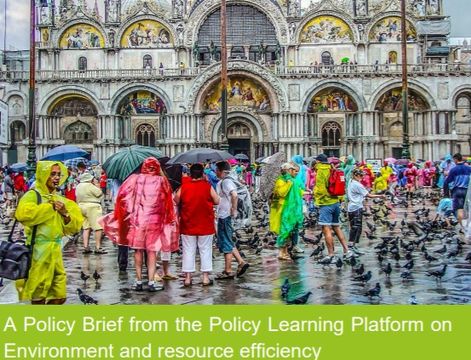
Cult-RInG project is featured in a new Policy Brief from the Policy Learning Platform, on 'Sustainable Tourism: Strategies to counteract overtourism'
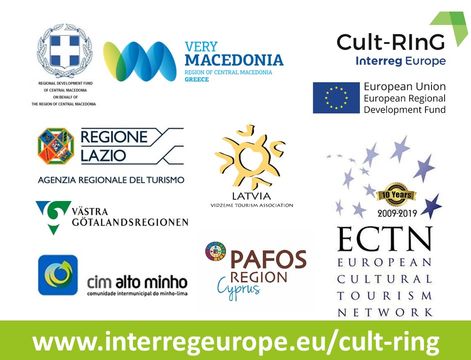
Video documentary on Cult-RInG outputs produced by advisory partner European Cultural Tourism Network (ECTN)
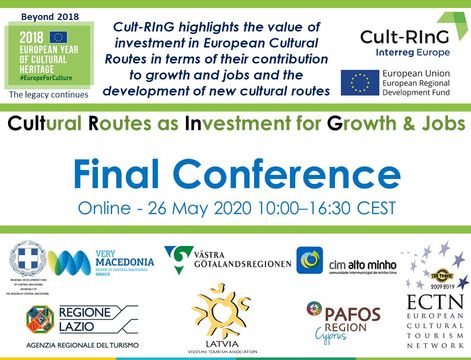
Videos of the Cult-RInG Final Conference, organised by advisory partner ECTN, are available to view online (3 sessions).

The Study Visits related to the Final Conference, regarding Cultural Routes in Central Mcedonia, Greece, are available on video online.

Call for offers:
Video recording in Central Macedonia Region, Greece (CLOSED)
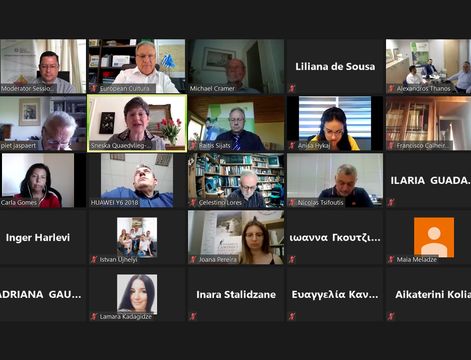
The Cult-RInG High-level dissemination event / Final Conference was held online on 26 May 2020, with participation of all partners and external audience

The European Cultural Route: "In the footsteps of St Paul, the Apostle of the nations", as candidate for Council of Europe certification by Cult-RInG project
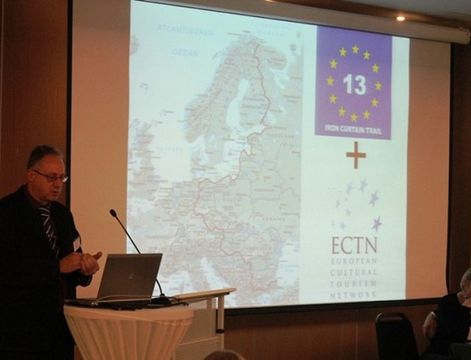
Vidzeme's Action Plan implemented during Phas 2 in 2019 with great results in obtaing Council of Europe certfication for the 'Iron Curtain Trail' Cultural Route
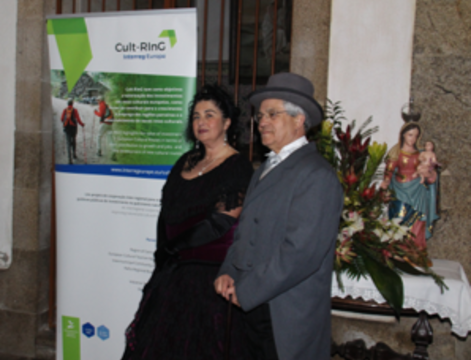
Alst Minho Inter-Municipal Community has made good progress in the action plan implementation for St James Way Cultural Route in North Portugal